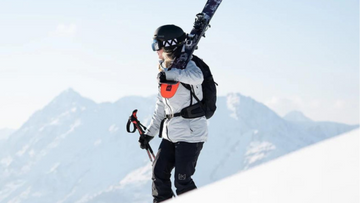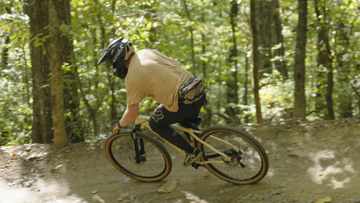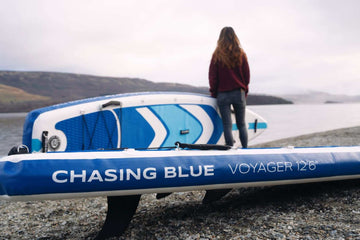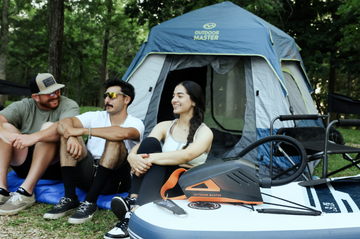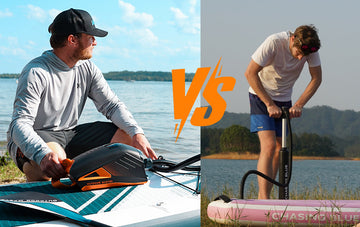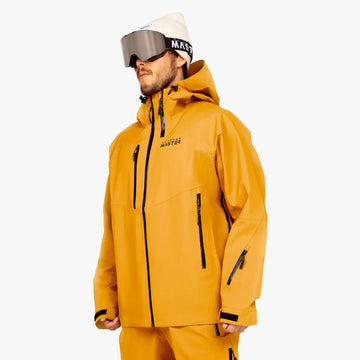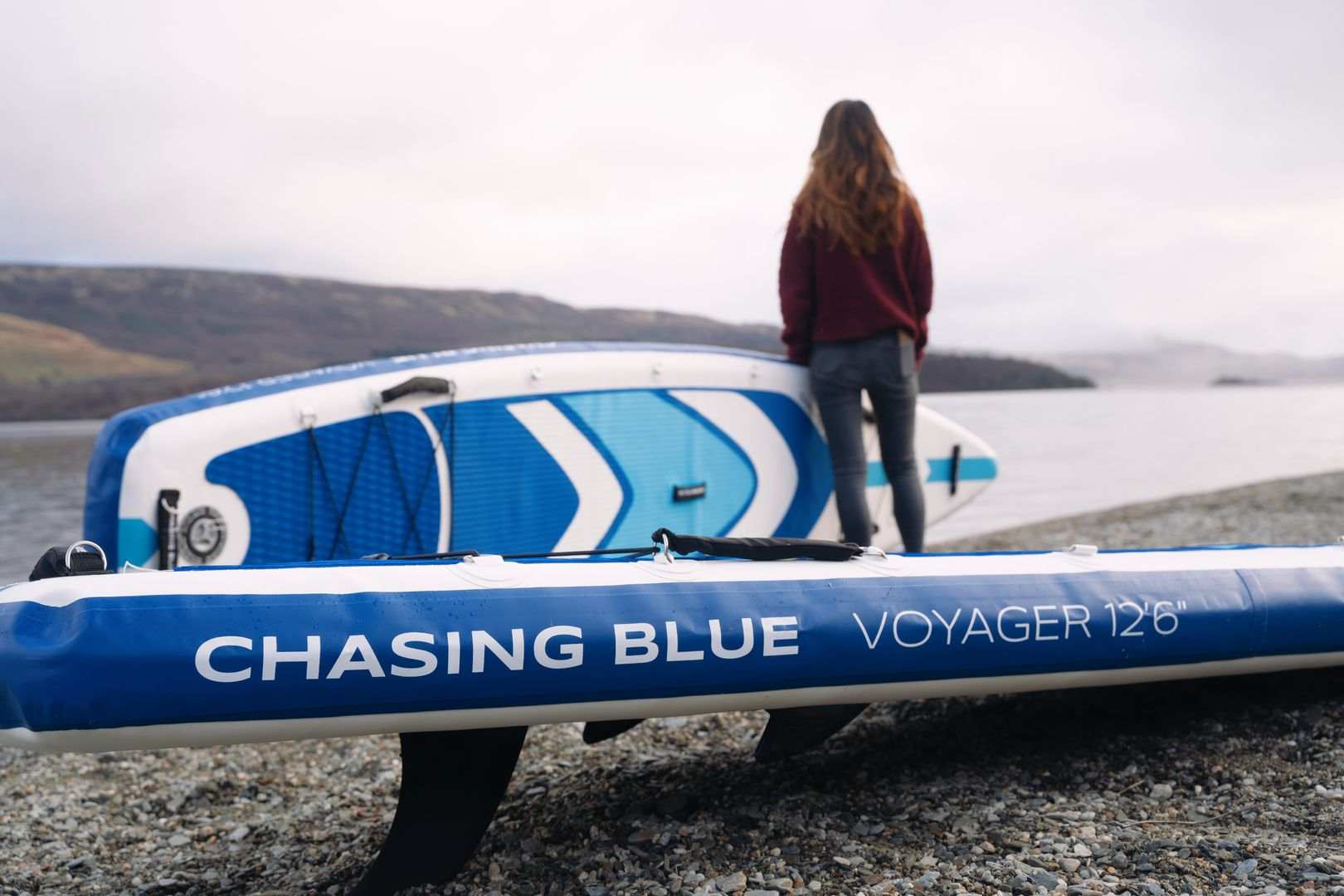
Curtesy to Evelyn Cheng
The global stand-up paddle board market is estimated at USD 1.5 Billion in 2022 and is forecast to surpass USD 3.8 Billion by 2032.
I'm sure that a large number of these beginners are undecided about whether to go with a solid paddle board or an inflatable paddle board.
So, inflatable paddle board vs solid, what exactly is the distinction between the two? Take a look at this to see the clear differences between the two. We go over the areas where each excels, making the decision process simple.
Table of content
REASONS THAT MAKE INFLATABLE PADDLEBOARDS A GOOD CHOICE
REASONS THAT MAKE SOLID PADDLEBOARDS A GOOD CHOICE
REASONS THAT MAKE INFLATABLE PADDLEBOARDS A GOOD CHOICE
MORE AFFORDABLE
To be honest, inflatable paddle boards should be your first choice if you want to get into paddling boarding without breaking the bank. This option not only offers superb packability and other noteworthy qualities, but it also saves you a significant amount of money. Inflatable paddle boards are less expensive than solid paddle boards.
The cost of an inflatable bard can range from $200 to $1,800. Hard boards, on the other hand, can range from $900 to $2,500 in price. It's possible that this could go even higher.
Inflatable boards are, in the end, the best alternative. There is no better way to try paddling boarding without breaking the bank than with an inflatable paddle board.
I recommend you see the inflatable paddle board in the Outdoor Master store. They are affordable while offering some features of premium paddle boards.
TRAVEL-FRIENDLY

Chasing blue Orion Touring iSUP board
USE CODE: OMBLOG20 for 10% OFF
Courtesy to Michael Ugrich
Depending to The New York Times, the travel theme for 2022 is ‘Go Big’ and according to The International Air Transport Association, there will be more people on planes and in airports.
When it comes to transporting convenience, an inflatable board is the best option. It may simply be deflated and stuffed into a backpack with other belongings because it packs down to a very tiny size.
Solid SUP boards, on the other hand, are a bit bulky, making them difficult to transport; specific equipment, such as roof racks and protective board socks, are required to transport them. In fact, the odds of them being destroyed while being transported on top of your automobile are significantly higher than when they are in use.
In other cases, both inflatable and hard paddle boards can be carried on planes; however, an inflatable paddle board saves money because it only requires a regular checked bag, which is less expensive. A solid paddle board, on the other hand, may compel you to pay additional luggage fees, and in the worst-case situation, the airline may refuse to take it. We haven't even talked about how easily they can be damaged on a plane.
MORE DURABLE
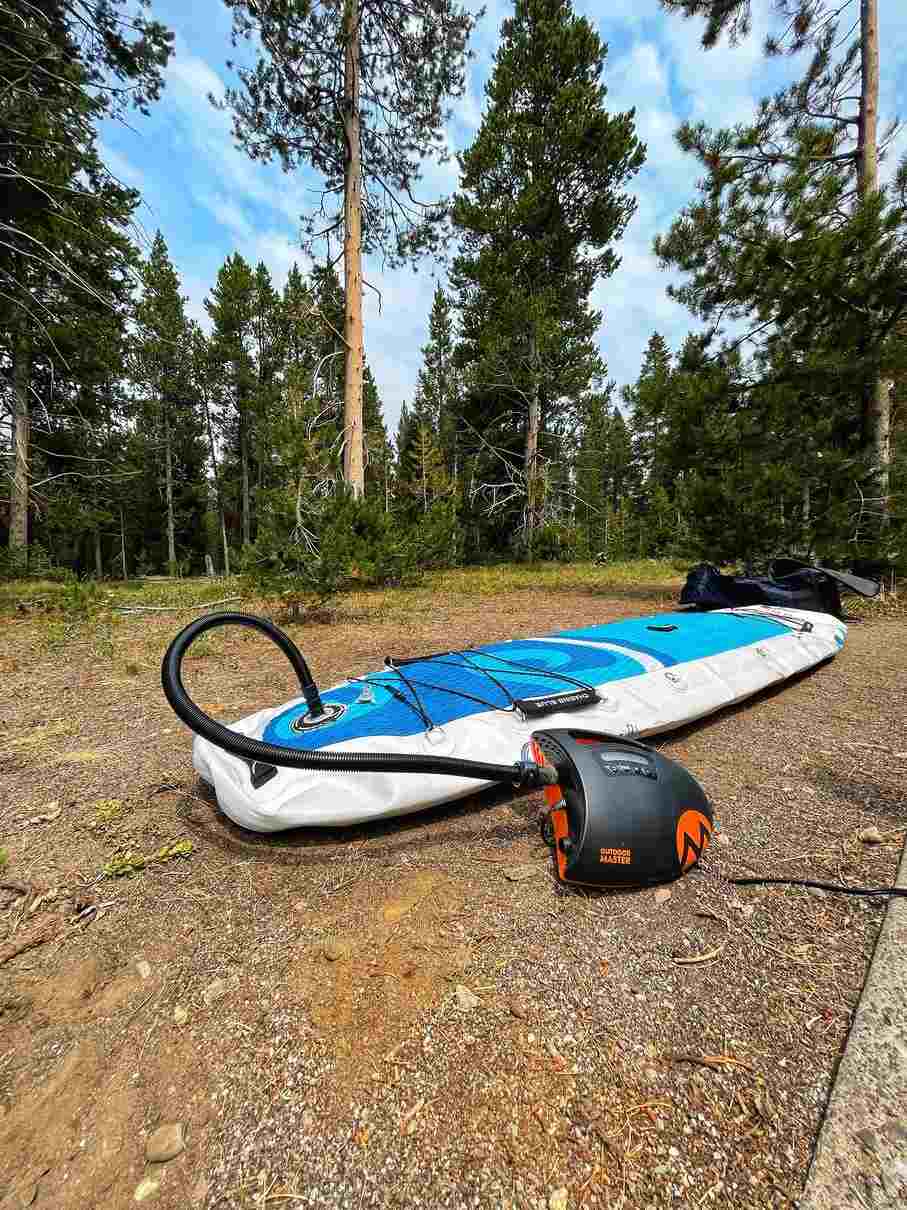
AQUA SPIRIT - ALL ROUND iSUP BOARD
USE CODE: OMBLOG20 for 10% OFF
Curtesy to Kalani Watson
The level of durability you get from your board should be the first thing you think about. After spending hundreds of dollars on it, the last thing you want is for it to be destroyed after a few days.
When it comes to durability, inflatable paddle boards are significantly superior to solid paddle boards. Yes, inflatable paddle boards are softer, but did you know that they are extremely difficult to damage? They're frequently manufactured with military-grade PVC protection and a tight drop stitch core, ensuring that you only get a high-performing paddle board, but also one that will endure a long time. Not only that, but inflatable boards are strong and have a tough coating that bounces right off if you strike a rock with them. As a result, you can carry it down to the river with less concern.
Damage to solid paddle boards is common. If you strike a rock with it, whether it's made of fiberglass or carbon, the chances of it cracking and gushing are fairly significant. Given how expensive they are, this could result in huge losses. Solid paddle boards are incredibly delicate by design. If you drop it from the car roof by mistake, it may sustain a variety of damages.
In any event, if you want to extend the life of your inflatable board and use it for a long time, you'll need to take good care of it. Before folding and storing it in your closet, make sure it's entirely dry and sand-free. It will ensure its survival.
MORE STABLE

ORION - TOURING iSUP BOARD
USE CODE: OMBLOG20 for 10% OFF
Courtesy to Felix
Yes, we all know that the width and strength of a board determine how stable it is, but you'll be surprised to learn that inflatable paddle boards are significantly more stable than solid paddle boards.
We've witnessed significant advancements in inflatable construction, such as drop-stitch and PVC technology, which have resulted in the building of solid platforms that are more stable on the water. Not only that; but the greater volume and weight capacities they provide can aid in stability.
As a result, inflatable paddle boards are preferable for beginners since they provide more stability.
- Useful Resource: Best Paddleboards for Beginners
DON'T HURT WHEN YOU FALL ON IT
“No matter how hard you try to stay balanced on your paddle board, you’re going to fall into the water at some point”
Julia Perry - REI Outdoor School instructor
Are you concerned about being wounded if you fall on them? Consider purchasing inflatable paddle boards. They are naturally soft, so you don't have to be concerned if you fall on them because you won't be wounded.
COMFORTABLE ON YOUR FEET OR HEELS
Inflatable boards are the ultimate winners when it comes to comfort. They frequently have plenty of cushioning on the deck area, making them extremely comfortable to stand on, kneel on, or even sit on.
You will feel less weariness than on hard boards because it is wonderfully comfortable and relaxing, thanks to the lower contact pressure. This may require you to paddle for an extended period of time. So, if you're planning on paddling for several hours, you'll know where to look.
TAKE LESS STORAGE SPACE

Courtesy to Michael Booth
One of the best aspects of inflatable boards, aside from portability, is that they take up relatively little storage space. They can be deflated, rolled up, and put away in their backpack with ease. Once it's safely in your backpack, you may put it beneath your bed or table; they're that little. This is the best alternative if you don't have a lot of storage space in your home.
To avoid harming the seams, it is suggested that you do not store your inflatable board at the maximum PSI level. A small quantity of air should be let out if you don't want to deflate it before storing it. It will aid in the longevity of your inflatable.
CAN BE PADDLED IN VARIED WATER SETTINGS

Coutesy to Kalani Watson
Inflatable boards, which are not only rigid but also have specific performance advantages over solid boards, have lately been developed as a consequence of substantial technological developments. As of today, if you're looking for a board to paddle in flat water, little waves, or even whitewater, an inflatable board is the best option.
Looking for an all-around inflatable paddle board that you can use for different SUP water activities? I recommend you the all-around iSUPs of the Outdoor Master store, they are available for people with different weights and heights and at affordable prices.
USE CODE: OMBLOG20 for 10% OFF
REASONS THAT MAKE SOLID PADDLEBOARDS A GOOD CHOICE
DON’T REQUIRE PREP TIME
Solid paddle boards have an advantage over inflatable paddle boards in that theydo not require any preparation time. Solid boards, unlike inflatables, do not require inflation before use and may be popped off the car top and into the water in seconds. Plus, you won't have to deflate it before putting it away once you're done with it. This might save you time and bother by eliminating the need to pump air into your board.
FASTER AND MORE MANEUVERABLE

Courtesy to Dimitris
Solid paddle boards are the way to go if you want to increase your speed and overall performance. They have well-designed displacement hulls that allow for superior water cutting, making them the finest choice for SUP surfing and SUP racing. After all, this not only improves the board's speed, but also its tracking ability.
Solid paddle boards are not only narrower but also have a pointed shape to them. They also have tapering noses and tails, as well as neatly turned rails. You'll be able to achieve faster speeds as a result of this.
In windy conditions, hard boards perform significantly better than inflatable boards. While their performance may be slightly lessened, you can still go out paddling in windy conditions (and you won't have to stop doing what you enjoy when the wind picks up). When it's windy, as you may know, it's nearly impossible to utilize a SUP.
MORE SUITABLE FOR SUP SURFING
Solid paddle boards are often constructed to be incredibly agile and nimble, which makes them the best choice for surfing. They also glide smoothly and handle waves significantly better than inflatable boards. In short, a solid paddle board is far more comfortable to surf with than an inflatable paddle board.
Although there are inflatable boards designed for small waves, hard boards are still the best for surfing because they give the rigidity needed for cutbacks.
EASIER TO FIX

iSUP Repair Kit
Regular price$19.99
USE CODE: OMBLOG20 for 10% OFF
Before making a decision, you should think about the board's maintenance and repair process.
A solid paddle board is the finest when it comes to being easy to repair. You can still use them even if they are scratched and if there are any cracks, they can be simply repaired with resin. It's a much simpler procedure that won't consume much of your time.
On the other hand, if the PVC on your inflatable board is punctured, you'll require repair adhesive and a patch. It is not a simple process, and you may make mistakes along the way, causing more harm than good.
So, if you don't want to go through all the difficulty, you now understand why hard paddle boards are the ideal option.
LESS IMPACTED BY PROLONGED SUN EXPOSURE

Curtesy to Ulrike
It is crucial to know that if an inflatable or solid paddle board is exposed to the sun for an extended period of time, both will deteriorate. When it comes to who is less affected by lengthy sun exposure, a solid board tends to be less affected.
If an inflatable board is exposed to direct sunlight for an extended period of time, adhesive and PVC material problems may arise. This can have a big impact on its overall performance and longevity. In any event, a solid board will only suffer from discoloration (which is pretty minor) and possibly weaker outer layers. When compared to an inflated paddle board, this may not have a significant impact on the performance of your solid paddle board.
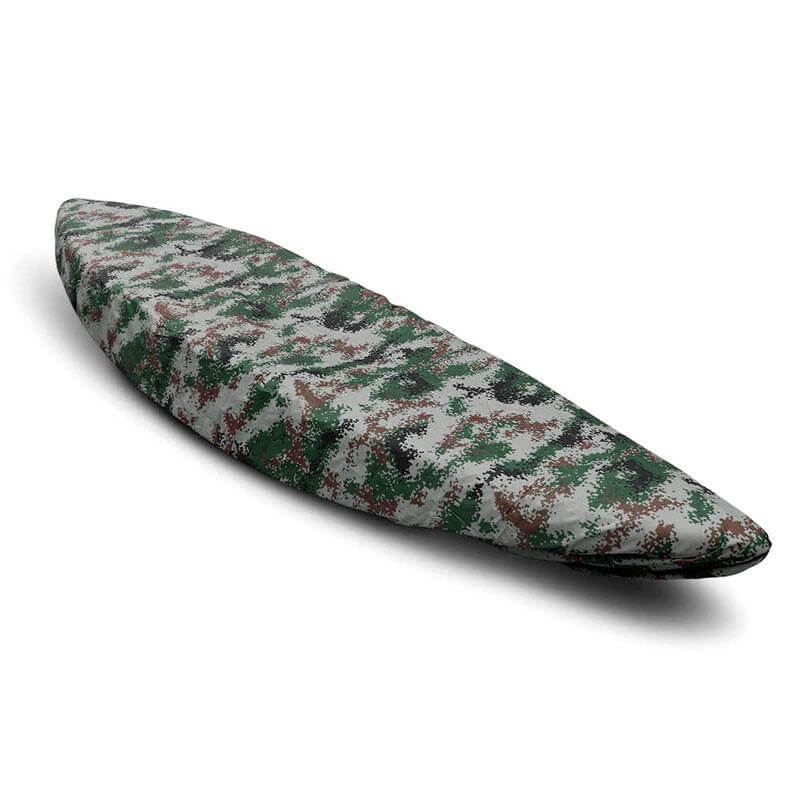
Kayak Canoe SUP Cover
Regular price$50.99
USE CODE: OMBLOG20 for 10% OFF
Looking to protect your inflatable SUP against the sun? Check this Outdoor Master paddle board cover, it is made out of sun ray reflecting and waterproof polyester material with an elastic drawstring that is easy to pull on and off the board.
CONCLUSION

Inflatable VS Solid Paddle Board
When it comes to the type of board to choose, it will ultimately come down to your particular preferences and needs. An inflatable board, for example, is far superior in terms of stability, comfort, and mobility. If you want a board that will serve you well under severe conditions, though, you'll need a solid paddle board.
An inflatable board can be a nice option if you're not sure what you want to do. This is a great combination of stability, comfort, durability, and portability. In a nutshell, there's no way to go wrong with this choice. That’s all for this comparison, I think now things are more clear for you.
Before signing out, don’t forget to join our SUP Facebook Group, where our friendly staff and SUP specialist will give you the best support and help for everything related to paddle boards.


